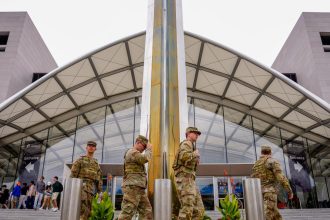While quiet and still on the outside, an abandoned building is a hub for trapping heat, according to new research out of Texas A&M University.
Lecturer Dr. Dingding Ren led the study using drone images and NASA satellite data to map heat at different abandoned buildings and paved lots across Houston.
“The more abandonment you have, then the hotter it is,” Ren said. “Those abandoned structures are way hotter because they keep absorbing heat during the daytime and they also released the heat over the nighttime.”
Ren said those sites are major heat sources compared to buildings that are in use.
“The A/C, everything is running,” Ren said. “So it’s way cooler.”
Within the City of Houston, the study found there are roughly 45,000 acres of vacant land and 10,000 acres of abandoned buildings. A majority of that land, Ren said, tends to be in low-income neighborhoods.
He said it poses health threats to people there.
“More likely to experience the heat stroke in those scenarios,” Ren said.
It’s why Ren said these areas need more trees and green spaces.
According to a study by the Kinder Institute, there’s a 14% discrepancy between tree canopy cover in the wealthiest and the most impoverished neighborhoods in Houston.
Getting more trees planted across Houston is an initiative of the City, according to its Climate Action Plan.
The goal is to plant 4.6 million new trees by 2030 and to specifically prioritize underserved communities.
“We use the green infrastructure to addressing this issues,” Ren said.









